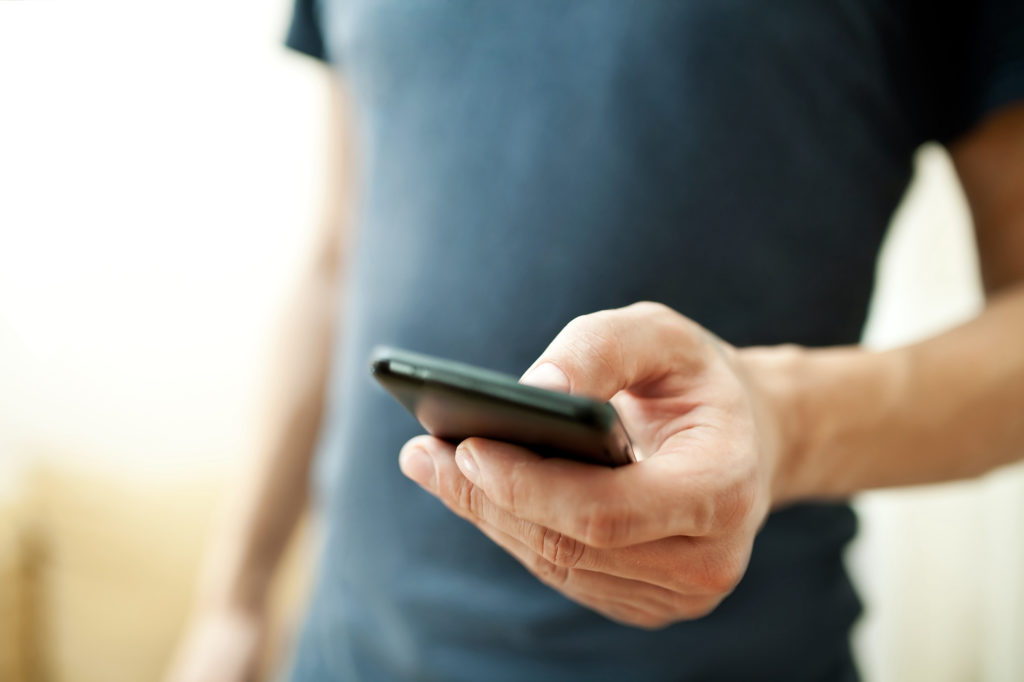How to Use Your Phone as a Signal Strength Meter
Have you ever found yourself holding up the phone and waving it in all sorts of directions just to get a signal? At some point, we have all experienced low bars and the frustration of not being able to make a phone call. But did you know that the bars on the top of your phone screen are not true indicators of your phone’s signal strength? That’s right. There’s another way to get an accurate picture of your phone’s signal strength and actually use your phone as a signal strength meter…
To make sense of this, let’s dig a little deeper.
How your phone is connecting to cell towers to make calls
Before we jump into uncovering how to check signal strength, it’s essential to know how things work.
When you make a call, electromagnetic radio waves are emitted. These are picked up by the nearest cell tower. Once the signal is received by the cell tower, it transmits it to a Mobile Switching Tower (MSC), which in turn allows the call to be connected. There’s a lot more behind the scenes technical physics involved, but we’ll leave it at this for now.
How To Use Decibels to Measure Signal Strength
Mobile phone signal strength is most accurately measured in Decibels (DB) and Decibel Milliwatts (DBm). The main difference between the two is
- Decibel Milliwatts – represents the difference between the two units (increase or decrease in signal). It helps in determining the amount of signal strength that may be produced by an amplifier system.
- Decibel Milliwatts – this refers to how much signal is present.
 What’s An Optimal Signal Strength for Phones?
What’s An Optimal Signal Strength for Phones?
So, now you know the basics, you might be wondering: what is a good signal strength?
Depending on the type of network you are on, the ideal signal strength will vary. For example, if you are on a 3G network, -70 DBm would be considered an excellent signal strength, whereas, on 4G, a signal strength of -90 DBm will be perfect. On the other hand, a signal of -110 DBm will be in a ‘dead zone’ if you are on a 3G network, but you might get away with a poor signal at the same DBm on a 4G network. In simple terms, the lower the DBm, the better the signal.
How do I check the signal strength of my phone?
Each phone has its unique way in which you can determine the signal strength of your phone.
- Android – to find the signal strength on your Android phone, go to – settings – click about phone – select status information – Click SIM card status
- iPhone – The iPhone has a field test application through which you can access the DBm information.
Using mobile apps to check the signal strength on your phone
These days it’s quick and easy to get this information by simply downloading an app on your phone. With the abundance of apps to choose from, you’ll be spoilt for choice. Here’s one suggestion to help you: Network Cell Info Lite & WiFi.
Mobile signal boosters we recommend
As the name suggests, mobile signal boosters are designed to amplify the cell signal reaching your device. So, if you’re in a building with a very poor cell signal, the signal booster will solve the issue. Below are a few mobile signal boosters we recommend.
- SureCall Flare 3.0 – for home cellular boosters.
- SureCall EZ-4G – best for those in apartments.
- WeBoost Drive Sleek – the best for in-vehicle when you’re on the go.
- WeBoost Home studio – Suitable for smaller homes.
- Cel-Fi pro – for when you went the extra signal boost in your apartment.
Whilst these are just some of the highly recommended signal boosters, there are plenty more where they came from to suit every need.
Still Experiencing Lack of Signal? Contact Laminar
If you’ve tried everything and are still struggling with the lack of cell signal, contact our team today.
We can reliably test for signal strength and provide you with a tailored solution to solve the problem so you can enjoy unwavering connectivity.
